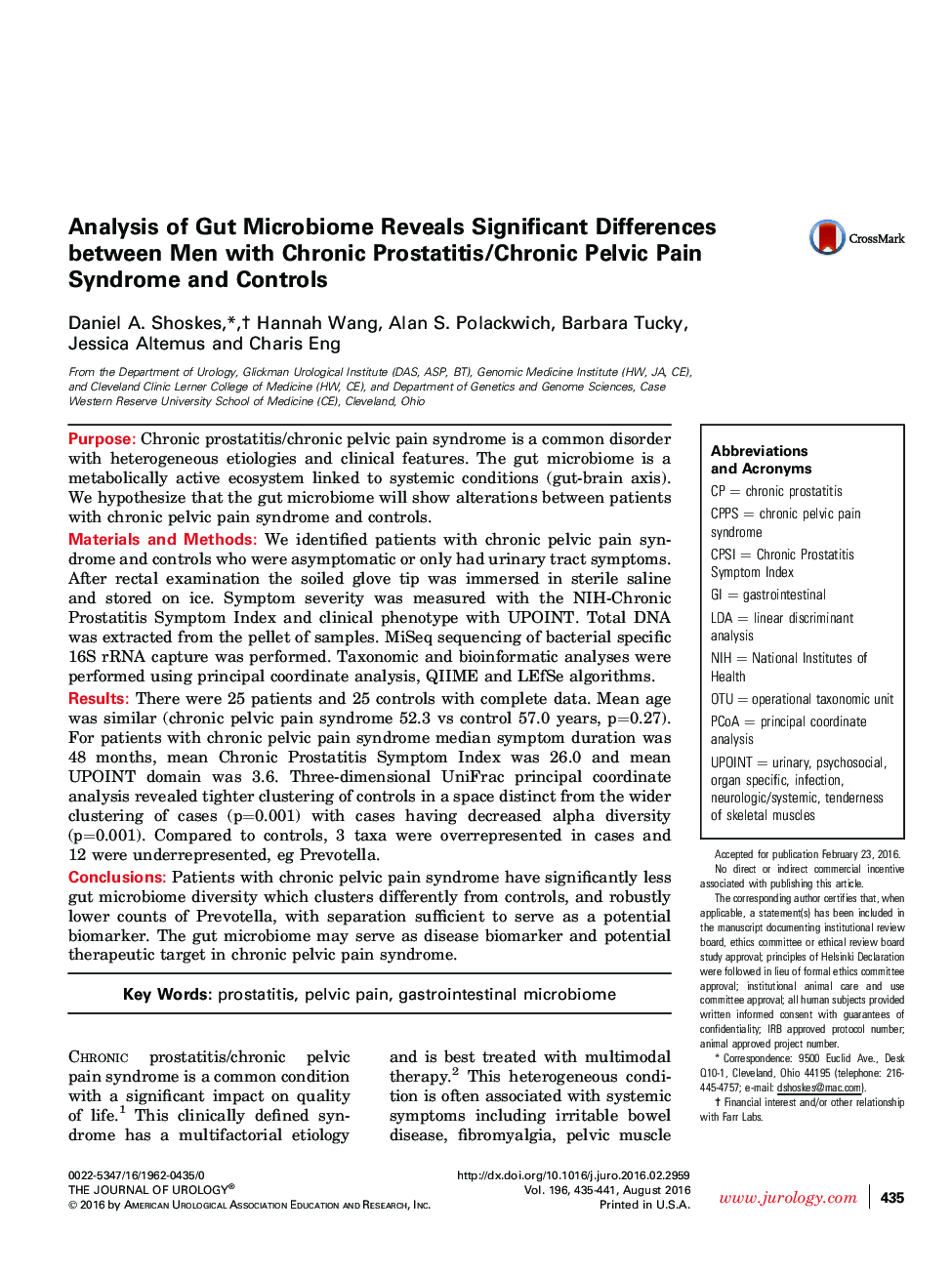| کد مقاله | کد نشریه | سال انتشار | مقاله انگلیسی | نسخه تمام متن |
|---|---|---|---|---|
| 3858405 | 1598873 | 2016 | 7 صفحه PDF | دانلود رایگان |
PurposeChronic prostatitis/chronic pelvic pain syndrome is a common disorder with heterogeneous etiologies and clinical features. The gut microbiome is a metabolically active ecosystem linked to systemic conditions (gut-brain axis). We hypothesize that the gut microbiome will show alterations between patients with chronic pelvic pain syndrome and controls.Materials and MethodsWe identified patients with chronic pelvic pain syndrome and controls who were asymptomatic or only had urinary tract symptoms. After rectal examination the soiled glove tip was immersed in sterile saline and stored on ice. Symptom severity was measured with the NIH-Chronic Prostatitis Symptom Index and clinical phenotype with UPOINT. Total DNA was extracted from the pellet of samples. MiSeq sequencing of bacterial specific 16S rRNA capture was performed. Taxonomic and bioinformatic analyses were performed using principal coordinate analysis, QIIME and LEfSe algorithms.ResultsThere were 25 patients and 25 controls with complete data. Mean age was similar (chronic pelvic pain syndrome 52.3 vs control 57.0 years, p=0.27). For patients with chronic pelvic pain syndrome median symptom duration was 48 months, mean Chronic Prostatitis Symptom Index was 26.0 and mean UPOINT domain was 3.6. Three-dimensional UniFrac principal coordinate analysis revealed tighter clustering of controls in a space distinct from the wider clustering of cases (p=0.001) with cases having decreased alpha diversity (p=0.001). Compared to controls, 3 taxa were overrepresented in cases and 12 were underrepresented, eg Prevotella.ConclusionsPatients with chronic pelvic pain syndrome have significantly less gut microbiome diversity which clusters differently from controls, and robustly lower counts of Prevotella, with separation sufficient to serve as a potential biomarker. The gut microbiome may serve as disease biomarker and potential therapeutic target in chronic pelvic pain syndrome.
Journal: The Journal of Urology - Volume 196, Issue 2, August 2016, Pages 435–441
